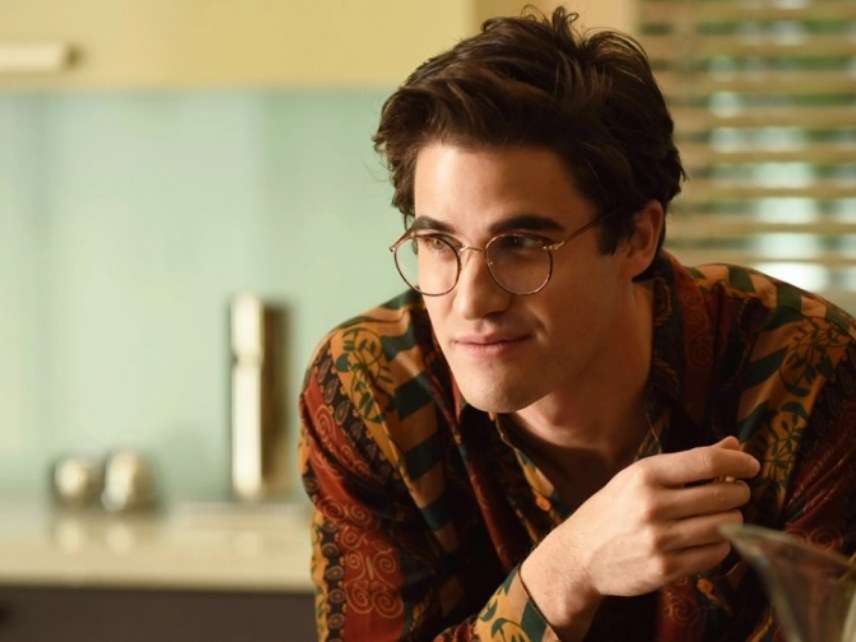American Crime Story Takes on Versace's Murder
The cult of celebrity in the crosshairs

The Assassination of Gianni Versace: American Crime Story. FX. Wednesday, January 17, 10 p.m.
It doesn't take long for The Assassination of Gianni Versace to get to the point. When the neo-couture designer is shot in the face outside his Miami Beach mansion, perhaps five minutes into the show, one riff-raff-ista snaps a quick Polaroid of his dying body, then begins soliciting business at the top of his voice: "I have the only photo of Versace! The bidding starts at 30 thousand!" A few feet away, tourists are soaking napkins in his puddled blood, then sealing them in plastic bags, artifacts of the True Cross for the 20th century's most heartfelt religion, the cult of celebrity.
If Federico Fellini had ever visited South Beach, the result might have been something like The Assassination Of Gianni Versace—a long, horrified gaze at the corrupting effect of celebrity, not just on those who possess it, but on the culture in which they dwell. Scarcely a moment this nine-episode miniseries—the second installment of Executive Producer Ryan Murphy's American Crime Story anthology drama—goes by fixing on images of the garish and grotesque: A psycho gay hustler dances around the soon-to-be-corpse of one of his tricks, smothering under a hood of duct tape bound around his head in what he expected to be a playful S&M ritual; wizened old men, pale pork bellies hanging over their speedo bathing trunks, wander the streets, peering into the seedy clubs where writhing bodies are wreathed in clouds of amyl nitrite.
And in scene after scene—the hospital, the morgue, the mortuary—the stiffening cadaver of Versace lies omnipresently by, gaping bullet wound in each cheek, awaiting repair with mortician's foundation, the final artifice of a life dedicated to the artful concealment of fashion.
The last season of American Crime Story, which retold with stunning acuity the story of O.J. Simpson's murder trial, also focused in part on the corrosive effect of celebrity, but mostly in the context of the criminal justice system.
This time around, Murphy and his screenwriter Tom Rob Smith (who in 2011 was a literary sensation with his Child 44 trilogy of novels about a homicide detective in Stalinist Russia) have taken square aim at celebrity and the cozenage it almost inevitably breeds.
The 1997 Versace murder is a perfect vehicle for their exploration. Both the Italian-born Versace and Andrew Cunanan, the spree killer who shot him, inhabited a sybaritic club world where sex was easy, drugs cheap and image the coin for both. Versace used his status as a fashion icon to attract a steady parade of awed young men to his mansion.
Cunanan, with no real accomplishments to his name ("Nothing, I've done nothing my whole life," he admits in a rare moment of candor) but possessing an excess of easy charm backed by a superlative talent for lying, pursues his own quarry: older men with money and a fearful indisposition to resist Cunanan's violent streak. A chance encounter between the two in San Francisco is seemingly uneventful, but in time it sets them on an inexorable collision course.
Murphy, as usual, has accumulated an excellent cast, including Penelope Cruz as Versace's dour sister Donatella, a weathered Ricky Martin as his weary party-boy lover D'Amico, and Judith Light (Amazon's Transparent) as the tightly wound wife of one of Cunanan's deeply closeted tricks. And Versace himself is capably played by Venezuelan actor Edgar Ramirez in his first major English-speaking role after a decade or so of bit parts.
But this show is ultimately the loot in a strong-arm robbery by Darren Criss as the murderous Cunanan. Criss, who played an amiably handsome prep school boy in Murphy's high-school-musical series Glee, brings a terrifying intensity to his role as the preening, dissembling Cunanan.
Whether he's befuddling random club acquaintances with blather about his spectacular (and entirely notional) cutting-edge fashion use of crinoline or hacking them to pieces with sharp objects, Criss forges a compulsively watchable chain that locks the camera to himself. His face beams sincerity; his eyes, something more complicated and more compelling, something that makes an acquaintance who has caught Cunanan lying shrug helplessly at his rejoinder: "So?"
Criss is so good that his performance isn't even undercut by the clumsy decision of Murphy and Smith to embrace the Hollywood's pseudo-artistic fad for jump-cutting across story lines. Not only is The Assassination of Gianni Versace told backward—the first episode starts with Versace's murder, the last ends with the designer and his murder struggling with overweening fathers in their childhoods—but it bounces around with flashbacks and flashforwards within individual sequences.
In his O.J. Simpson show, Murphy did a masterful job of clinging to a coherent master narrative while juggling multiple characters and subplots. He's much less effective here. At times, I wondered if the next scene might open with Sawyer, Jack, and Kate trying to bounce the island further back in time.
Even so, The Assassination of Gianni Versace is a formidable piece of work, brilliant in its characterizations and harrowing in its depictions of the amorality of American culture's dark underside. Cunanan, asked by a barroom pickup who he is, replies with the dark clarity of a bloodline that stretches from Charles Manson back to Adolf Hitler, Jack the Ripper, and beyond: "I'm the person least likely to be forgotten."


Show Comments (28)